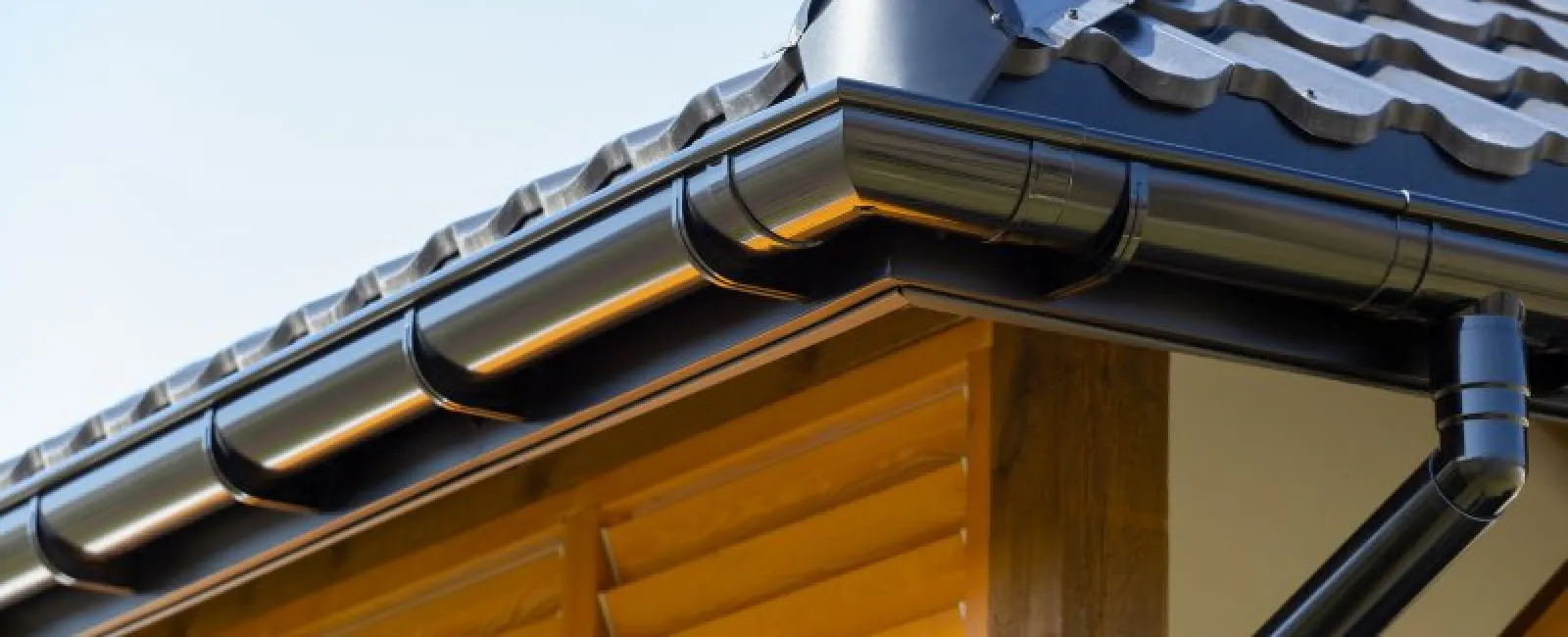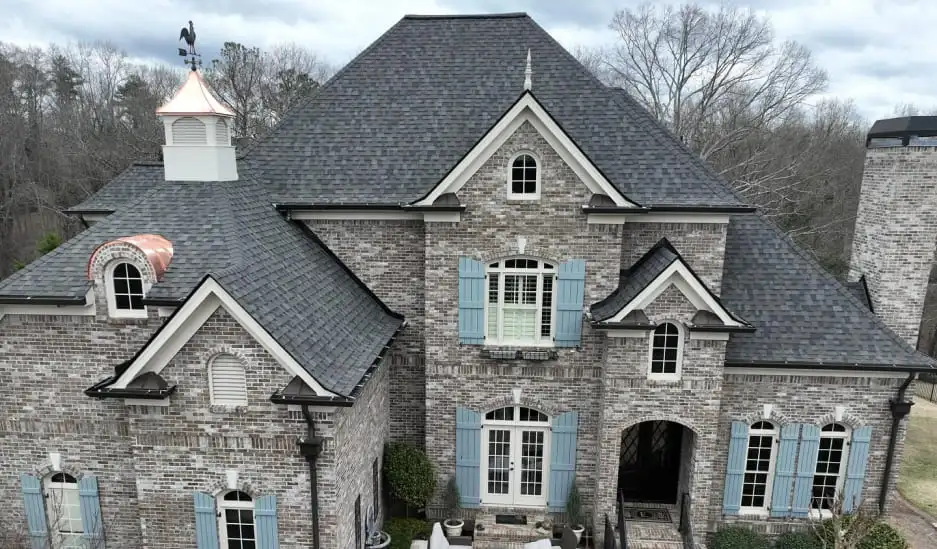Whether you’re building a new home or updating your existing exterior, your choice of gutters has a big impact not only on the appearance of your home but also on the performance and durability of those gutters over time.
While you can always find standard, run-of-the-mill gutters at your local home improvement store, it’s worth taking a few minutes to explore your full range of gutter and downspout options. With different materials, designs, and colors to choose from, you have plenty of choices to combine functionality with a modern update to your home’s appearance.
Here’s a quick guide to finding the best gutters for your home.
Different Types of Gutters for Your Home
The type of gutter you choose affects not only the appearance of that gutter, but also its ability to facilitate water drainage, and the ease of cleaning it of debris. While there are many different styles of gutters you may ultimately choose for your home, most homes are outfitted with gutters shapes that fit one of the following three styles:
- K-style: This is one of the most popular types of gutters due to its structural integrity and its efficiency in draining water into downspouts. K-style gutters are also easier to clean than many alternative gutter styles.
- Fascia: This is a taller, more narrow style of gutter that looks great from the street and is efficiently designed with drainage in mind. The narrowness of its interior, though, can make it more difficult to clean than other gutter styles.
- Half-round: While very easy to clean, half-round gutters are also more prone to experience debris buildup due to their U-shaped design. This design also reduces the amount of water the gutter can hold during a storm, which can lead to overflowing gutters when rain is heavy.
Do Your Gutter Materials Make a Difference?
Style isn’t the only feature that affects the performance, appearance, and cost of your gutters. The materials used in your rain gutters and downspouts also affect the cost, durability, and curb appeal of new gutters being installed on your home.
Here are some of the most common materials used to make residential gutters and downspouts:
- Aluminum: This metal is popular for a lot of reasons. It’s one of the cheapest and lightest materials used for gutters, it won’t rust, it’s easy to paint, and it’s extremely durable against a wide range of elements. But as thin and inexpensive metal, aluminum is easily dented, and its appearance can fade over time, which can age the rest of your home.
- Vinyl: Not only does vinyl beat aluminum on cost, but it’s also an easy option for DIYers installing their own gutter and downspout systems. While it also offers durability and the flexibility to be painted, vinyl will degrade over time with exposure to high heat and sunlight. This can make your gutters more brittle, more faded in color, and more likely to break.
- Steel: Love the look and lifespan of aluminum, but worried about its durability over time? Steel addresses these limitations, although it’s very heavy and requires a professional installation. Steel will also rust over time, so while the material is physically very strong, it may not last as long as other weaker materials.
- Zinc: Concerned about durability? Zinc gutters are built to last 50 years or longer. They also become more attractive over time as the zinc develops a natural patina when exposed to the elements. Like aluminum and vinyl, zinc is also rust-proof. But it’s also very expensive, and it requires a professional installer. Oceanfront homes may also not be suitable environments for zinc gutters, since the salt content of the air can accelerate the deterioration of this material.
- Copper: Want to make your curb appeal pop? Copper offers a striking appearance that can help distinguish your home from others on the block. Over time, copper ages and develops a green patina that offers its own kind of beauty. While copper gutters can last for up to 100 years in the right conditions, the obvious downsides are that it is expensive and locks you into one color for your gutters.
Identifying the Best Rain Gutters for Your Home
Struggling to narrow down your gutter options and make a choice? Here are some tips to help you navigate the decision-making process.
- Check with your homeowner’s association for restrictions on roof gutter types. Some homeowner’s associations may not allow aluminum or vinyl, for example, or they may restrict gutter color options. These rules can help rule out certain options and simplify your choice.
- Consider your budget. If you’re looking for a budget-friendly option, premium gutters and downspouts made from zinc and copper may not be a good option.
- Match gutter colors to your home’s exterior. Do certain colors or materials clash? If so, they may not be the right choice.
- Think about how long you’ll live in your home. While copper may be your ideal gutter material, its cost may not make sense if you plan to sell your home in the near future.
- Don’t forget about maintenance. From gutter and downspout repairs to gutter cleaning, consider how the shape of the gutter and the materials used might increase your labor and maintenance requirements.
While new gutters are an investment, they’re also a great opportunity to improve your home’s drainage and freshen its appearance. Make sure the gutters you choose are a great fit for your current needs, your budget, and your future plans for your home.



